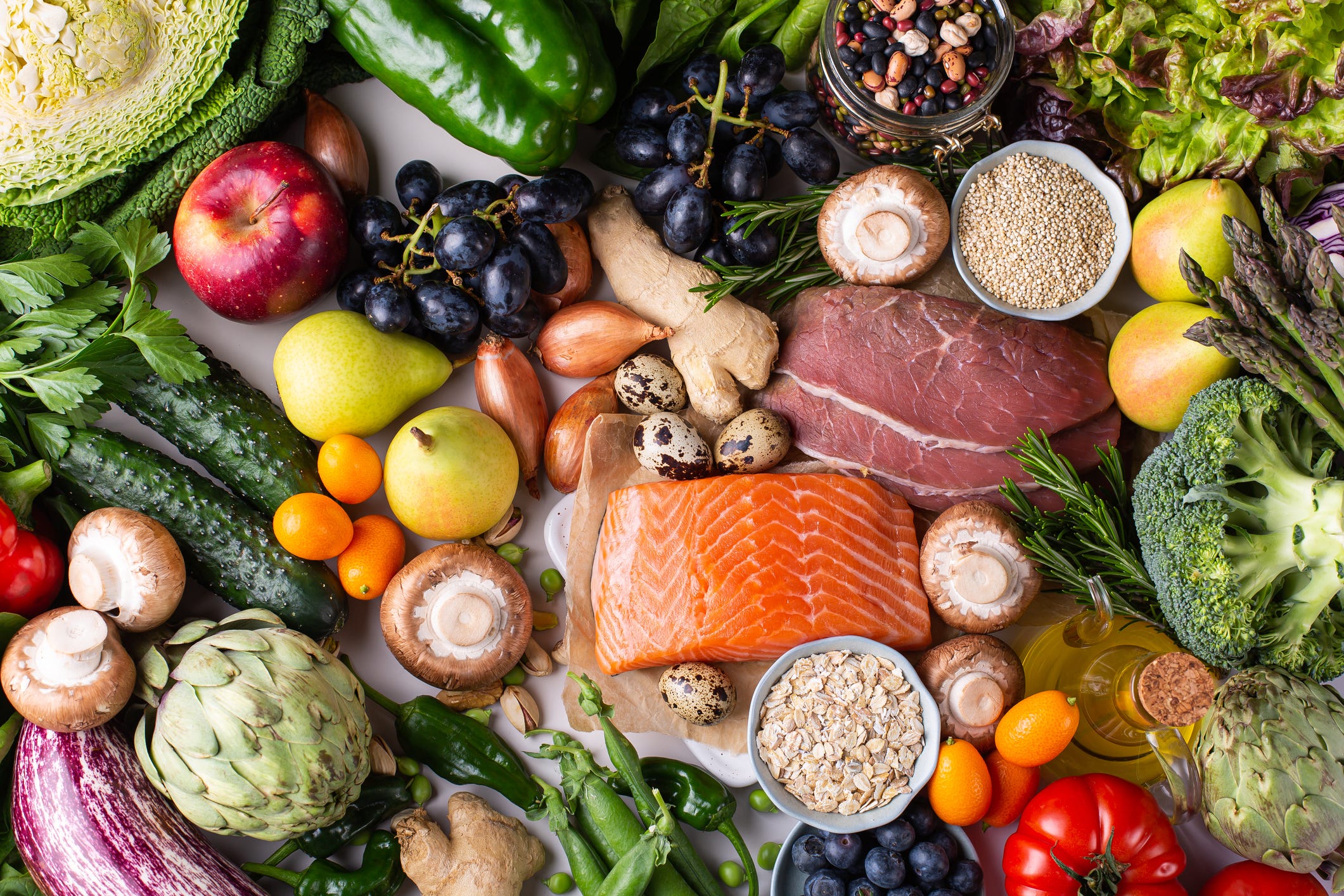A balanced diet is vital for maintaining good mental and physical health, optimal weight and fitness, and assuring you feel your best.
“Finding a way of eating that is nutritious and sustainable not only promotes health but can be reassuring in meeting lifestyle goals as well,” says Kate Zeratsky, a registered dietitian nutritionist at Mayo Clinic in Rochester, MN.
While well-rounded meal choices are often the focus of a balanced diet, healthy snack options are important, too. “Including vegetables and fruits as snacks can help improve one’s diet and allow for more options at mealtime,” says Zeratsky.
But wanting to achieve a balanced diet and doing so aren’t the same thing. Experts weigh in on what a balanced diet is and where to begin.
What is a balanced diet?
Though various health advocacy organizations have their own definitions of what a balanced diet means, each organization agrees that a balanced diet, sometimes called a healthy dietary pattern, needs to provide the nutrients required to help one’s body grow and develop, build immunity against infection and disease and remain healthy.
“A balanced diet is one that includes a variety of foods from all food groups,” explains Zeratsky. Such a diet should also provide the hydration and nutrients needed to maintain energy levels high enough for plenty of physical and cardiovascular activity.
Alice Lichtenstein, DSc, director of the Cardiovascular Nutrition Team at the Jean Mayer USDA Human Nutrition Research Center on Aging at Tufts University, says a balanced diet is “rich in a variety of fruits and vegetables, products made with whole grains rather than refined grains, beans and nuts, low-fat and fat-free in place of full-fat dairy items, and mostly plant sources of proteins.” She says such eating will help with “meeting essential vitamin and mineral requirements for most individuals,” and can be adapted for individual needs.
What not to eat on a balanced diet
Another important aspect of eating a balanced diet is knowing which foods should be avoided. “The easiest way to work towards achieving a balanced diet is to limit intake of ultra-processed food and to prepare as much food as possible at home,” advises Lichtenstein. Examples of processed foods include frozen meals, fast food, flavored yogurt, soda, and most items that are packaged in a factory such as cookies, chips and candy.
Zeratsky cautions to also be careful with fad diets. “Fad diets are called so because they come and go,” she says. Lichtenstein agrees, and says such diets can make it hard to achieve lasting results. “When one makes radical changes in their diet, they may reap impressive benefits in the short term, but data indicate that people don’t stick with the changes in the long term,” she says. “This puts them back to square one once they tire of the new ‘wonder’ diet.”
One thing to look out for is “any diet that reads like a ‘do and don’t eat list’ because they may be lacking in some nutrients,” explains Zeratsky. She adds that there are medical conditions and situations that might involve such lists, “but even they should still allow for a variety from all food groups.”
On that front, she advises that a balanced diet, “should also not require supplements.” That is, of course, unless one has nutrient deficiencies and supplementation has been advised by a physician. Additional vitamin and mineral supplementation might also be desired for other benefits, but usually shouldn’t replace the natural source of the nutrient.
How to start eating a balanced diet?
Once one understands what a balanced diet is – and what it is not – such knowledge can be implemented into one’s everyday routine. This can be helped by remembering a few tips.
Uma Naidoo, MD, director of nutritional and lifestyle psychiatry at Massachusetts General Hospital and the author of “This is Your Brain on Food,” says one rule of thumb she follows is to “remember to eat the rainbow.” This means a diet “rich in colorful veggies and berries to make sure you’re getting plenty of mental health supporting polyphenols, vitamins and minerals,” she says.
She adds that it’s also important to choose healthy foods that one enjoys and will consistently want to eat so healthy eating “becomes a lifestyle rather than a ‘diet.'”
Zeratsky offers similar advice and says it’s OK not to eat every food group in every meal. “Aim to include at least two to three of the food groups each meal,” she suggests. “This allows for variety and preference and can be helpful in planning while also being realistic for those who might be feeling the challenges of time, budget, and striving to put a more nutritious meal together.”
Read more about healthy eating here:
Morning or night?With food or without? Answers to your questions about taking supplements
What is the healthiest cheese?Here are some low-sodium, low-calorie and low-fat options.
What is the healthiest cereal?What to know about the nutrition info on the back of the box.
More:Zinc is an important nutrient, but get it from food, not supplements, experts say







